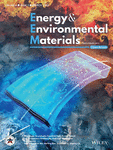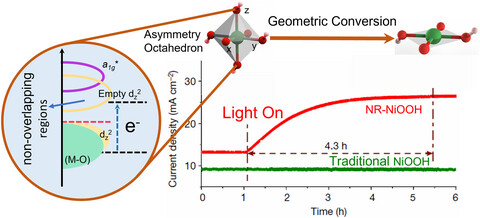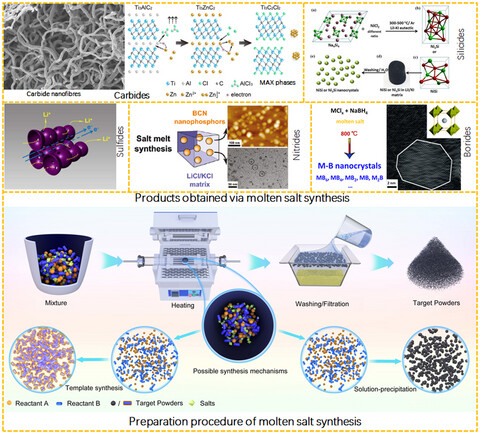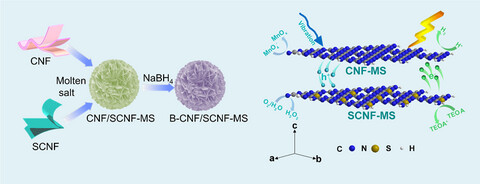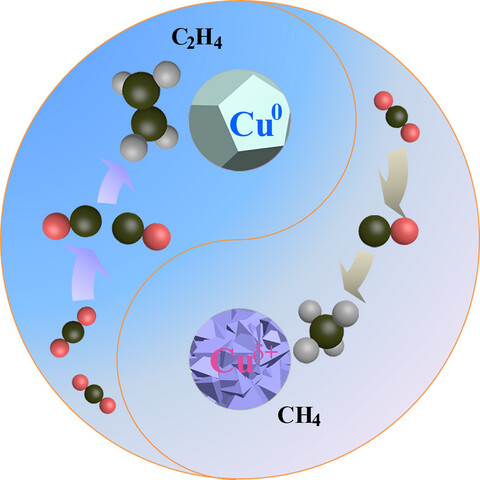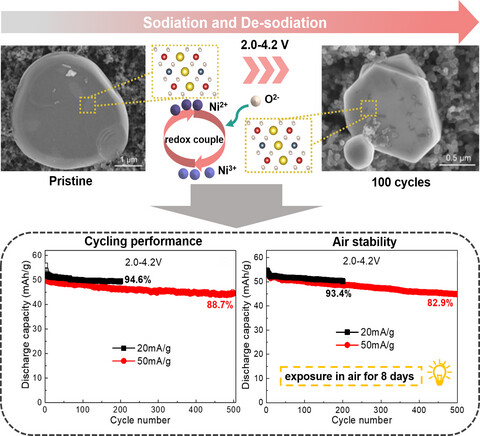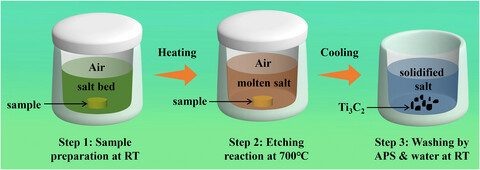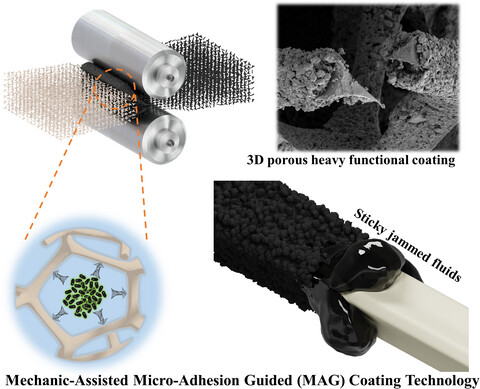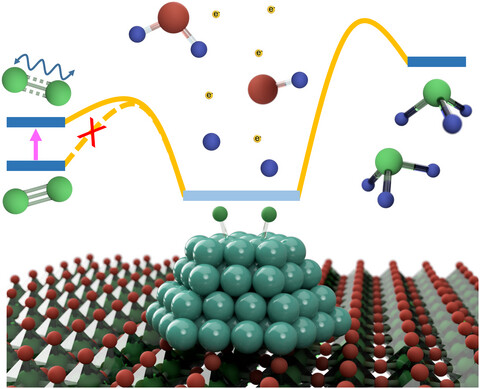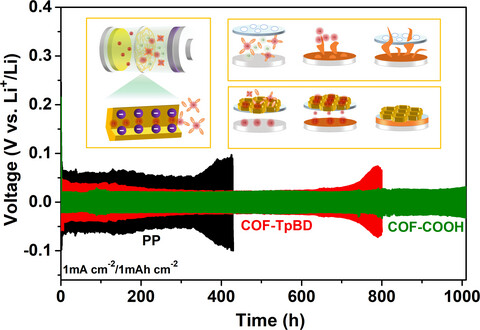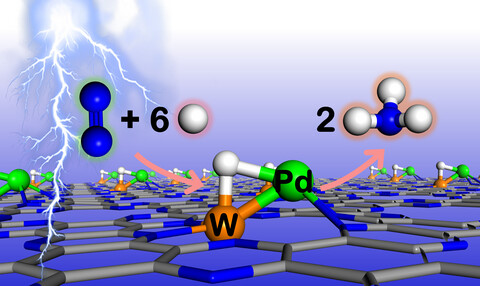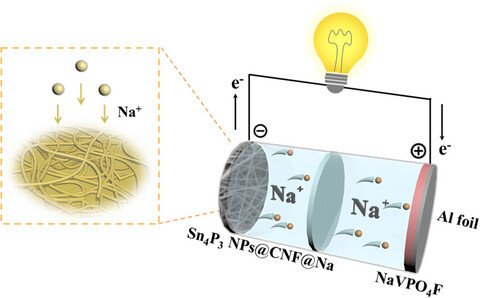Journal list menu
Export Citations
Download PDFs
ISSUE INFORMATION
HIGHLIGHT
Oxygen Evolution Reaction
Light Inducing the Geometric Conversion of NiO6 to Trigger a Faster Oxygen Evolution Reaction Pathway: The Coupled Oxygen Evolution Mechanism
- First Published: 21 November 2022
REVIEWS
Photocatalysis
Electrospun Semiconductor-Based Nano-Heterostructures for Photocatalytic Energy Conversion and Environmental Remediation: Opportunities and Challenges
- First Published: 21 December 2021
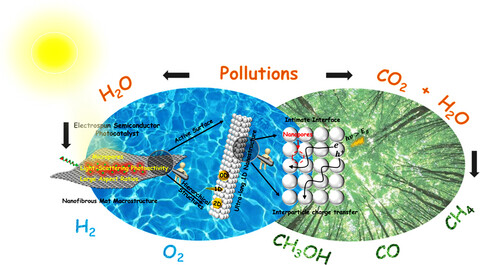
This review summarizes recent progress in the research area of electrospun semiconductor-based nano-heterostructures for the photocatalytic energy conversion and environment remediation. It also analyzes the structure advantages of electrospun semiconductor-based nano-heterostructure photocatalysts on the increase in the light-harvesting ability, charge separation, and catalytic active site. The photocatalytic pollutant decomposition, H2 production, and CO2 reduction over electrospun semiconductor-based nano-heterostructure photocatalysts are reviewed, and future perspectives and challenges are discussed.
Synthesis
Advances in Molten Salt Synthesis of Non-oxide Materials
- First Published: 21 December 2021
Ionic Conductor
Recent Advances on Polyoxometalate-Based Ion-Conducting Electrolytes for Energy-Related Devices
- First Published: 28 December 2021
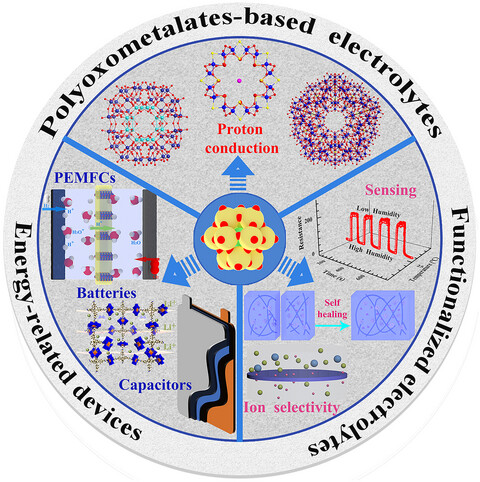
Polyoxometalate (POM) nanoclusters with unique structures hold enormous promise in the realms of energy-related devices, due to their reversible redox activity and high ionic conductivity. The annotations in this review are envisioned to provide an overview of how POMs have evolved as ion-conducting materials from basic research to novel solid-state electrolytes in energy devices.
Battery Materials
Designing Advanced Liquid Electrolytes for Alkali Metal Batteries: Principles, Progress, and Perspectives
- First Published: 23 January 2022
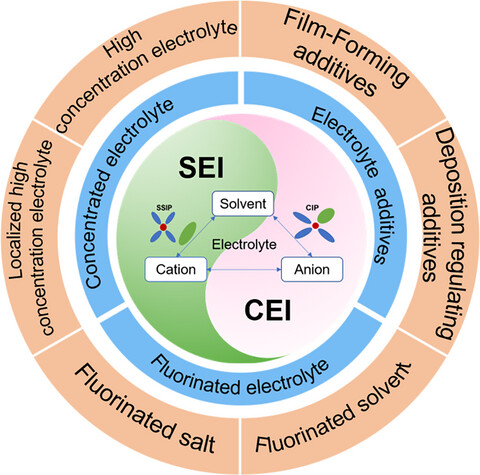
Here, we propose a critical review on the most recent advances in designing advanced liquid electrolytes for AMBs. We first introduce the fundamentals of AMB electrolytes. We then review recent advancements in concentrated and fluorinated electrolytes, as well as functional electrolyte additives for boosting the stability of AMBs. Finally, we present the remaining challenges and outlook of liquid electrolytes in AMBs.
RESEARCH ARTICLES
Metal Organic Frameworks
A Catalytic Copper/Cobalt Oxide Interface for Efficient Hydrogen Generation
- First Published: 18 September 2021
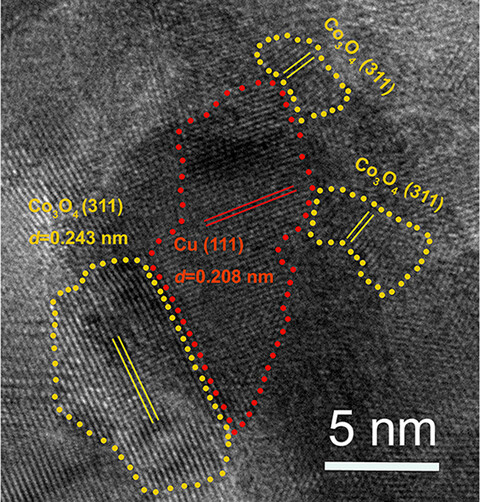
The Cu–Co3O4 nanoparticles (NPs) interfacial composite with a turnover frequency of 57.5 min−1 for the hydrolysis of ammonia borane shows the synergistic effect of Cu and Co3O4 NPs. This study opens up a new pathway for achieving high-efficiency noble metal-free catalysts for hydrogen generation and other heterogeneous catalyses.
Carbon Nitride
Constructing Crystalline g-C3N4/g-C3N4−xSx Isotype Heterostructure for Efficient Photocatalytic and Piezocatalytic Performances
- First Published: 02 November 2021
Electrochemistry
Switching CO2 Electroreduction Selectivity Between C1 and C2 Hydrocarbons on Cu Gas-Diffusion Electrodes
- First Published: 02 November 2021
Solid-state Batteries
Tuning Solid Interfaces via Varying Electrolyte Distributions Enables High-Performance Solid-State Batteries
- First Published: 02 November 2021
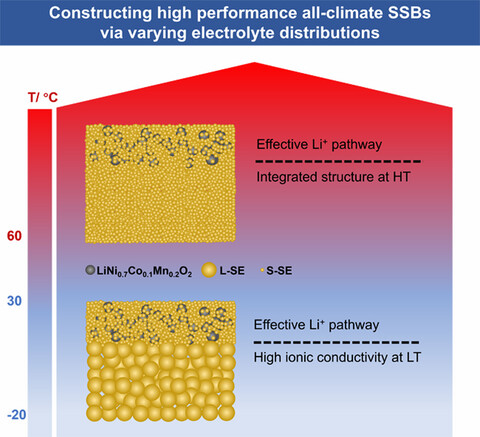
The SSB with small-sized electrolyte (S-SE) in cathode and large-sized electrolyte (L-SE) in electrolyte layer (S/L battery) exhibits the superior electrochemical performance at room temperature and −20 °C resulting from faster lithium-ion dynamics, while the S/S battery demonstrates the better performance under 60 °C due to the integrated structure during cycling.
Lithium Ion Batteries
Easily Obtaining Excellent Performance High-voltage LiCoO2 via Pr6O11 Modification
- First Published: 22 November 2021
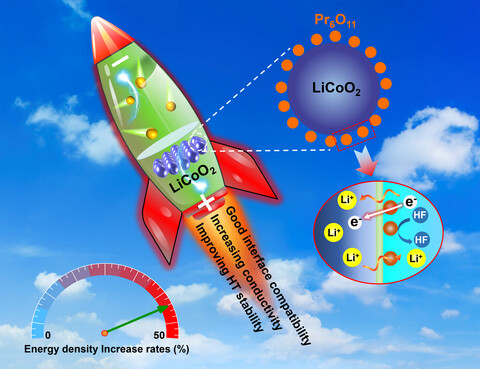
Pr6O11 modification enables commercial LCO to achieve excellent 4.5 and 4.6 V high-voltage cycling performance. Several effective strategies were used to clearly unveil the interface compatibility and structure stabilization mechanism induced by Pr6O11 modification. The pouch cell with modified Pr6O11 boosts the energy density even by ~42% increase at 5 C and distinctly improves the thermal safety performance.
Photocatalyst
Recycling Spent LiCoO2 Battery as a High-efficient Lithium-doped Graphitic Carbon Nitride/Co3O4 Composite Photocatalyst and Its Synergistic Photocatalytic Mechanism
- First Published: 22 November 2021
Batteries
P2-Na2/3Ni2/3Te1/3O2 Cathode for Na-ion Batteries with High Voltage and Excellent Stability
- First Published: 25 November 2021
Electrocatalytic Nitrogen Fixation
Smart Interfacing between Co-Fe Layered Double Hydroxide and Graphitic Carbon Nitride for High-efficiency Electrocatalytic Nitrogen Reduction
- First Published: 30 November 2021
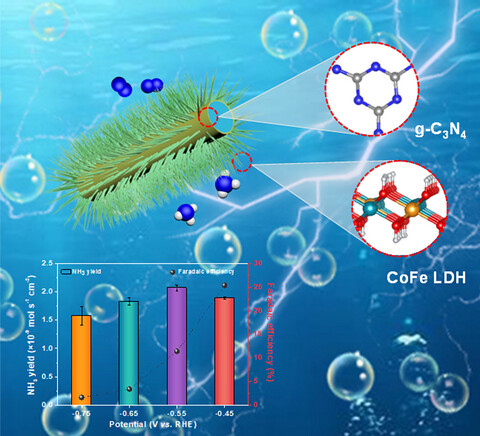
A coupled heterointerface between Co-Fe LDH and g-C3N4 is formed, which is revealed by DFT investigations to be favorable for nitrogen adsorption and ammonia desorption compared with neat LDH surface. The interfaced LDH and g-C3N4 is further hybridized with a TiO2 nanofibrous membrane to maximize the interfacial effect, resulting in a high-efficiency, noble-metal-free catalyst system towards electrocatalytic nitrogen reduction.
Batteries
Li+ Solvation Mediated Interfacial Kinetic of Alloying Matrix for Stable Li Anodes
- First Published: 30 November 2021
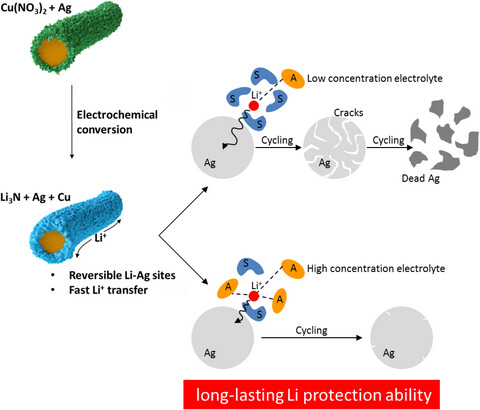
A bi-functional Ag-Li3N blended interface is employed for producing Li alloying matrix with simultaneously decreased Li nucleation and mass transfer-controlled overpotentials. In parallel, the durability of the operational Ag sites is enhanced profoundly by restricting the inward diffusion depth of the Li adatoms through Li+ solvation structure manipulation, resulting in much elongated protection ability for high energy density Li metal anodes.
Electrocatalysis
Epitaxially Grown Ru Clusters–Nickel Nitride Heterostructure Advances Water Electrolysis Kinetics in Alkaline and Seawater Media
- First Published: 30 November 2021
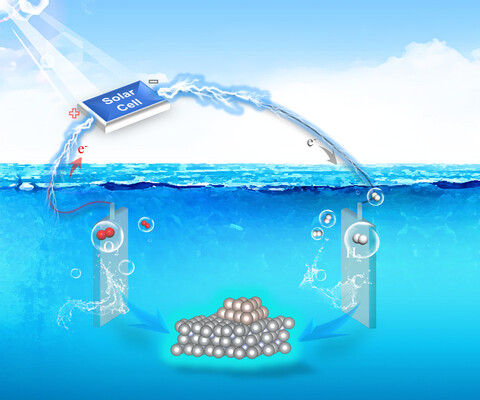
The epitaxial heterostructures between Ru clusters and Ni3N substrate (cRu-Ni3N) are theoretically elucidated and elaborately constructed by virtue of the lattice similarity, which display remarkable electrocatalytic activity for both oxygen and hydrogen evolution, and consequent terrific application prospect in alkaline water splitting, seawater electrolysis, and solar-to-hydrogen integrated system.
Lithium Sulfur Batteries
Microporous Cyclodextrin Film with Funnel-type Channel Polymerized on Electrospun Cellulose Acetate Membrane as Separators for Strong Trapping Polysulfides and Boosting Charging in Lithium–Sulfur Batteries
- First Published: 30 November 2021
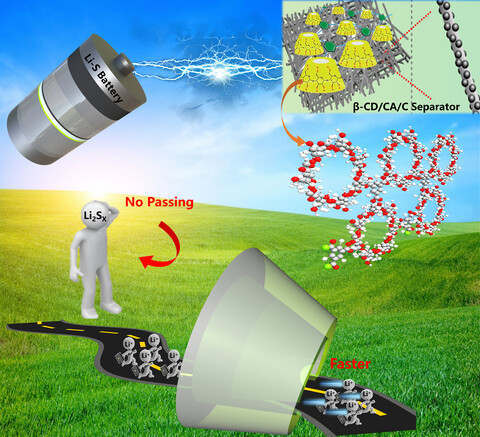
The β-CD-based molecular sieve film decorated CA nanofiber membrane derived from recycled cigarette filters was fabricated for Li-S battery separator. This β-CD/CA/C separator could physically block and chemically trap polysulfides. The funnel-type channel of β-CD generates a differential ionic fluid pressure on both sides, resulting in a rapid charging performance in lithium secondary batteries.
Supercapacitor
Zinc-Based Metal–Organic Frameworks for High-Performance Supercapacitor Electrodes: Mechanism Underlying Pore Generation
- First Published: 04 December 2021
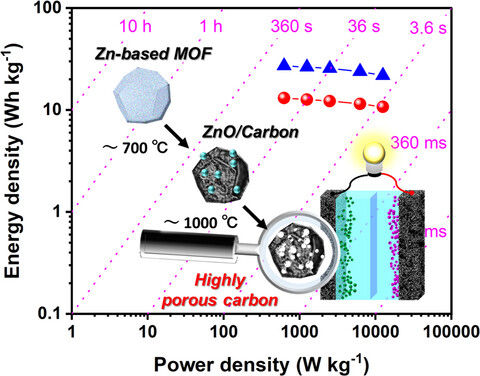
The heat treatment of Zn-based metal–organic frameworks (MOFs) produced highly porous carbons (~2700 m2 g−1), which achieved high specific capacitances in both aqueous and non-aqueous electrolytes. In situ dynamic techniques revealed that the pore generation mechanism was closely related to either the Zn/C ratio or the O/C ratio, depending on the calcination temperature.
Tin-lead Perovskite Solar Cells
Crystallization Regulation and Morphological Evolution for HTM-free Tin-Lead (1.28eV) Alloyed Perovskite Solar Cells
- First Published: 06 December 2021
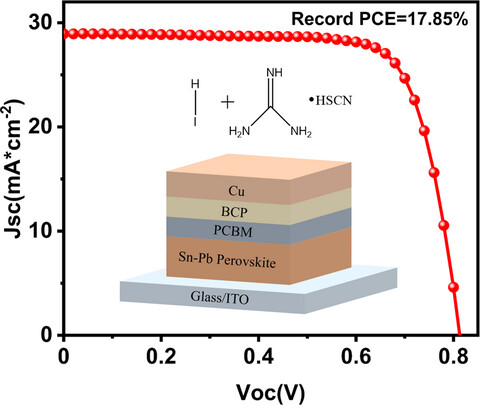
By introducing GASCN and HI into perovskite precursor solution, we successfully fabricated Sn−Pb alloyed hole transport material-free narrow bandgap (1.28 eV) PSC with highest power conversion efficiency of 17.85%. GASCN and HI play a positive synergy effect during perovskite crystallization process resulting in larger grain size, fewer surface defects and lower trap density to suppress the Sn2+oxidation degradation.
Lithium Primary Batteries
Interface-Structure-Modulated CuF2/CFx Composites for High-Performance Lithium Primary Batteries
- First Published: 06 December 2021
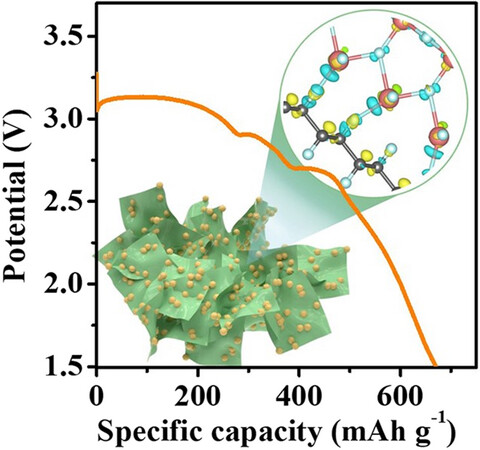
CuF2/CFx hybrid cathodes with high volumetric energy density exhibit three distinct discharge plateaus rather than the simple combination of discharge profiles of components is first reported. The charge redistribution and lattice modulation on the contact surfaces of CuF2 and CFx during planetary ball milling enhance the valence state of Cu and modify electronic structures of composites.
Overall Water Splitting
Unveiling the Optimal Interfacial Synergy of Plasma-Modulated Trimetallic Mn-Ni-Co Phosphides: Tailoring Deposition Ratio for Complementary Water Splitting
- First Published: 07 December 2021
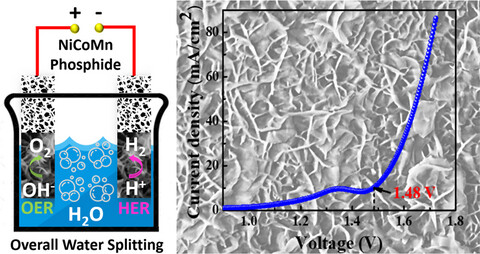
The equimolar trimetallic MnNiCo phosphide showed an outstanding HER catalytic performance with a current density of 10 mA cm−2 at an ultra-low overpotential of ~14 mV, outperforming the best-reported electrocatalysts. Moreover, it appreciably catalyzes the OER by exposing more intrinsic active species in-situ formed on the catalyst surface during the OER with a decreased overpotential of ~289 mV at 10 mA cm−2 with perfect durability up to 48 h. Meanwhile, the assembled MNC-P/NF||MNC-P/NF full-water electrolyzer system attained an extremely low cell voltage of 1.48 V at 10 mA cm−2 with remarkable current retention of ~96% after a continuous 50 h run.
Ca-Metal Batteries
Artificial Hybrid Solid Electrolyte-Mediated Ca Metal for Ultradurable Room Temperature 5 V Calcium Batteries
- First Published: 07 December 2021
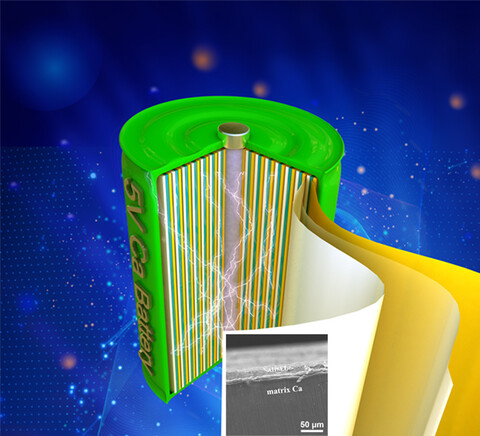
A strategy of artificial solid electrolyte realizes calcium nitride hydride hybrid interphases with good charge transfer kinetics, which further endow calcium metal battery a good capacity of ≈80 mAh g−1 at 200 mA g−1 and 2.0–5.0 V, a high average discharge voltage of >3.3 V, and superior anodic stability of 5.0 V ceiling voltage.
Magnesium Ion Batteries
Tailoring Mg2+ Solvation Structure in a Facile All-Inorganic [MgxLiyCl2x+y·nTHF] Complex Electrolyte for High Rate and Long Cycle-Life Mg Battery
- First Published: 08 December 2021
![Tailoring Mg2+ Solvation Structure in a Facile All-Inorganic [MgxLiyCl2x+y·nTHF] Complex Electrolyte for High Rate and Long Cycle-Life Mg Battery](/cms/asset/39651724-1e47-47d5-b075-3831a950a692/eem212327-toc-0001-m.jpg)
An all-inorganic magnesium–lithium chloride complex (MLCC) electrolyte, with a unique solvation structure and fast surficial redox kinetics, was synthesized using a simple reaction of MgCl2 and LiCl salts in THF solvent at room temperature. The Mg/Mo6S8 full cells using the MLCC electrolyte achieved a superior capacity retention of 85 mA h g−1 after 10 000 cycles at an ultrahigh rate of 50 C.
Li-ion Storage
Molten Salt-Shielded Synthesis (MS3) of MXenes in Air
- First Published: 08 December 2021
Electrocatalysis
Interface and M3+/M2+ Valence Dual-Engineering on Nickel Cobalt Sulfoselenide/Black Phosphorus Heterostructure for Efficient Water Splitting Electrocatalysis
- First Published: 08 December 2021
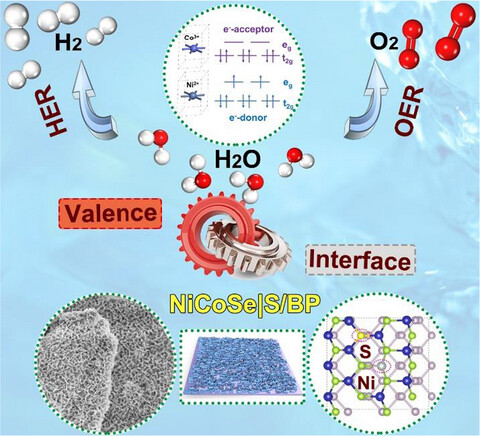
A nickel cobalt sulfoselenide/black phosphorus (BP) heterostructure was constructed by in-situ growing NiCo hydroxide nanosheet arrays on few-layer BP and subsequently sulfoselenization by SeS2, which achieves the highly active and durable water electrolysis through interface and M3+/M2+ valence dual-engineering. Molecular sensing and density functional theory calculations are further proposed for understanding the rate-determine steps and enhanced catalytic mechanism.
Air Filtration
Scalable and Heavy Foam Functionalization by Electrode-Inspired Sticky Jammed Fluids for Efficient Indoor Air-Quality Management
- First Published: 04 January 2022
Perovskite
Moisture-Induced Non-Equilibrium Phase Segregation in Triple Cation Mixed Halide Perovskite Monitored by In Situ Characterization Techniques and Solid-State NMR
- First Published: 20 December 2021

Moisture-induced phase segregation of CsMAFA perovskite is scrutinized by in situ X-ray diffraction under 85% RH, live observation liquid-transmission electron microscopy and combined to solid-state NMR. Entropy gain of complex stoichiometries triggers phase segregation into Cs/Br poor perovskite along with CsPb2Br5 and PbI2 by-products.
Lithium-Ion Batteries
Seamlessly Merging the Capacity of P into Sb at Same Voltage with Maintained Superior Cycle Stability and Low-temperature Performance for Li-ion Batteries
- First Published: 21 December 2021
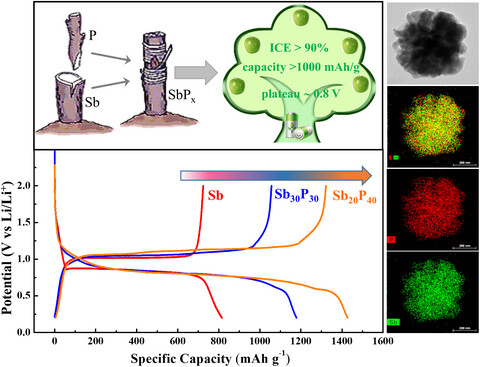
A unique seamless integration strategy is proposed by merging the capacity of P into Sb at the same voltage, without sacrificing Sb’s conductivity and cyclability. The Sb-P interaction at atomic level distribution does occur in mechanical milling, rather than simple mixing. Thus, the formed Sb60-xPx solid solution alloy exhibits enlarged capacity (993 mAh g−1), high ICE (90%), single stable plateau (0.79 V), and superior low-temperature performances (621 mAh g−1 at −30°C) for LIBs.
Supercapacitors
Ordered Macroporous MoS2-Carbon Composite with Fast and Robust Sodium Storage Properties to Solve the Issue of Kinetics Mismatch of Sodium-Ion Capacitors
- First Published: 21 December 2021
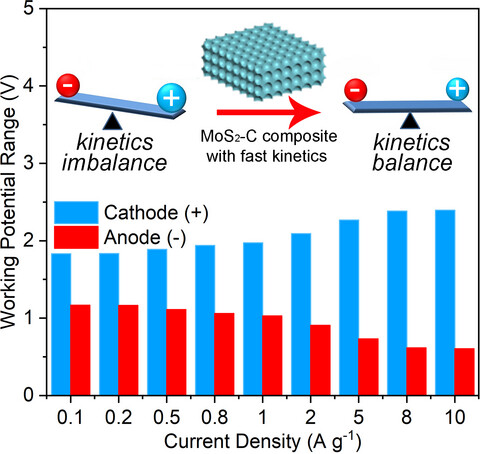
Ordered macroporous MoS2-carbon composite with favorable structure is demonstrated to have the excellent Na+ storage properties in specific capacity, rate capability, and cycling stability. Such high-performance MoS2-carbon composite anode is able to solve the issues of kinetics mismatch toward sodium-ion capacitor with high performance in energy density and power density.
Zinc Ion Battery
Promoting Proton Migration Kinetics by Ni2+ Regulating Enables Improved Aqueous Zn-MnO2 Batteries
- First Published: 22 December 2021
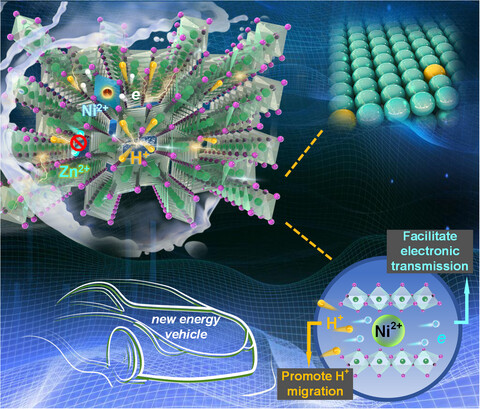
Ni2+-doped MnO2 is successfully synthesized for aqueous ZIBs. The introduction of Ni2+ can effectively regulate the H+ storage behavior and endow the Ni-MnO2 electrode material with excellent proton migration kinetics. Meanwhile, Ni2+ could lower the diffusion barrier of H+ and selectively induce the ion intercalation. Density functional theory clearly reveals that Ni2+ doping significantly ameliorates structural stability and enhances conductivity of electrons.
Ammonium Ion Battery
Switching Optimally Balanced Fe–N Interaction Enables Extremely Stable Energy Storage
- First Published: 29 December 2021
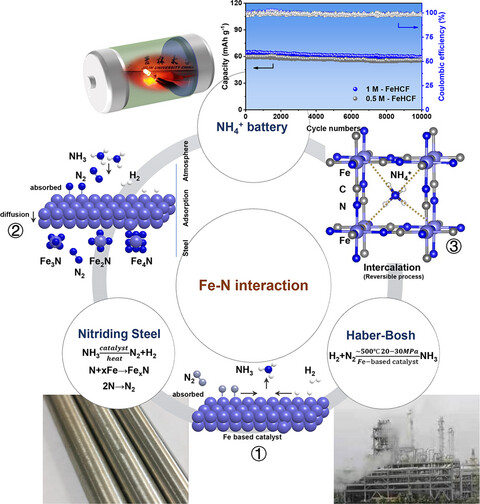
Inspired by manipulating the electrostatic adsorption between N and Fe in the early stages of ammonia synthesis (Bosch-Harber Process, Chemical Engineering) and steel nitriding processes (Metal Industry), we can switch the optimally balanced Fe–N interaction during the (de)intercalation of ammonium ions (NH4+) within iron(III) hexacyanoferrate (FeHCF) for an extremely stable energy storage.
Plasma Catalysis
Sustainable Ammonia Synthesis from Nitrogen and Water by One-Step Plasma Catalysis
- First Published: 29 December 2021
Lithium Metal Battery
Understanding Dual-Polar Group Functionalized COFs for Accelerating Li-Ion Transport and Dendrite-Free Deposition in Lithium Metal Anodes
- First Published: 06 January 2022
Single-atom Catalyst
Surface Molecular Encapsulation with Cyclodextrin in Promoting the Activity and Stability of Fe Single-Atom Catalyst for Oxygen Reduction Reaction
- First Published: 07 January 2022
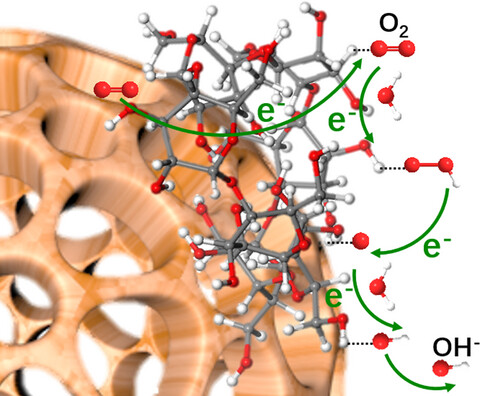
A surface molecular encapsulation strategy is proposed to modify the Fe-based single-atomic catalyst using cyclodextrin (CD). The CD modification is effective in regulate the microenvironment of the atomic Fe and acting as the protective barrier against poisoning species, and hence to optimize the ORR activity and stability of Fe SACs. This strategy demonstrates the uniqueness of post-pyrolysis surface molecular engineering for the design of single-atom catalyst.
Photovoltaics
Alleviating Interfacial Recombination of Heterojunction Electron Transport Layer via Oxygen Vacancy Engineering for Efficient Perovskite Solar Cells Over 23%
- First Published: 06 January 2022
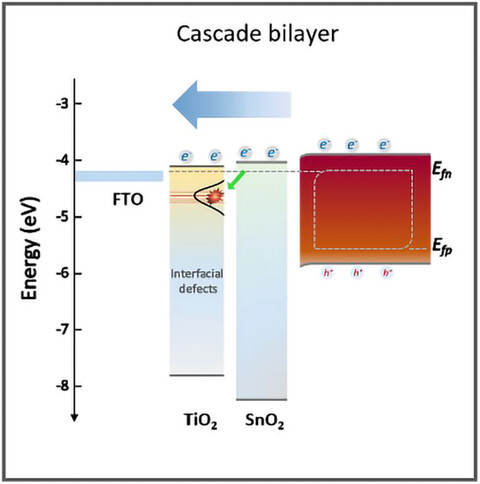
This study demonstrates a simple and effective atomic reconstruction for an efficient TiO2/SnO2 heterojunction bilayer for the electron transport layer used in a perovskite solar cell. The fundamental understanding of this work may leverage the potential of heterojunction ETLs and further investigation in materials science, particularly for the development of an efficient charge transport layer in metal halide perovskite photovoltaics.
Electrocatalytic
Mechanistic Insights into Electrocatalytic Nitrogen Reduction Reaction on the Pd-W Heteronuclear Diatom Supported on C2N Monolayer: Role of H Pre-Adsorption
- First Published: 06 January 2022
Lithium–sulfur Batteries
Integration of Desulfurization and Lithium–Sulfur Batteries Enabled by Amino-Functionalized Porous Carbon Nanofibers
- First Published: 10 January 2022
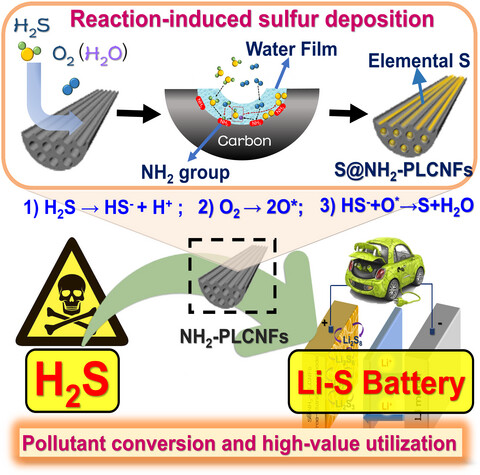
Integrated application toward efficient desulfurization and cathode preparation of high-performance lithium-sulfur battery has been realized simultaneously by amino-functionalized porous lotus root-like carbon nanofibers (NH2-PLCNFs). Superior to the traditional method of molten sulfur infusion at high temperature, this environmental-cleaning strategy leads to a uniform and effective sulfur deposition, and the optimal sulfur loading can be tailored by controlling the H2S conversion process.
Sodium Metal Batteries
Affinity-Engineered Flexible Scaffold toward Energy-Dense, Highly Reversible Na Metal Batteries
- First Published: 04 February 2022
Zn-ion Hybrid Supercapacitor
All-Climate Stretchable Dendrite-Free Zn-Ion Hybrid Supercapacitors Enabled by Hydrogel Electrolyte Engineering
- First Published: 09 February 2022
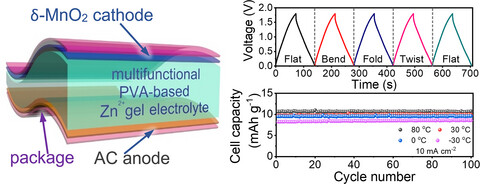
An advanced quasi-solid-state flexible Zn-ion hybrid supercapacitor (FZHSC) is developed in the absence of heavy Zn, avoiding the growth of Zn dendrite. Enabled by the anti-freezing, stretchable, and compressible PVA hydrogel electrolyte designed via hydrogen bond and microstructure regulation, the FZHSC exhibits robust stretchability and can be operated at −30~80 °C, ensuring all-climate application.
Sodium Ion Batteries
Uniform Metal Sulfide@N-doped Carbon Nanospheres for Sodium Storage: Universal Synthesis Strategy and Superior Performance
- First Published: 11 March 2022
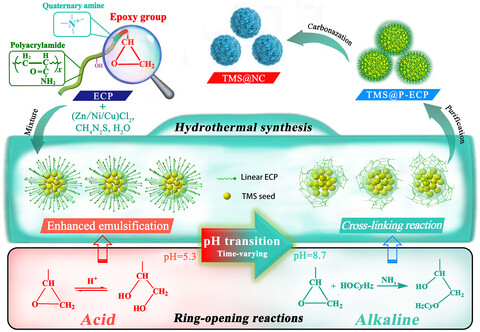
Based on the ring-opening reaction of the epoxy group of the tertiary amino group-rich epoxide cationic polyacrylamide (ECP) in hydrothermal process under different acid–base environments, 47 nm-sized ZnS@NCs were prepared in a one-pot synthesis. Meanwhile, the TMS@NC electrode synthesized by this method has excellent cycle life and high-capacity retention.
Water Splitting
Atomic Heterointerface Engineering of Nickel Selenide Confined Nickel Molybdenum Nitride for High-Performance Solar-Driven Water Splitting
- First Published: 22 September 2022
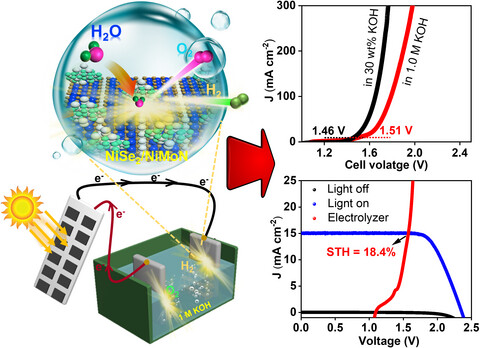
Catalytic performances of nickel selenide confined nickel molybdenum nitride heterostructure are highly improved toward HER and OER in alkaline medium. Due to special synergistic effects, the developed electrolyzer results in outstanding cell voltages of 1.51 and 1.46 V to reach 10 mA cm−2 in 1.0 M and 30 wt% KOH solution, respectively, along with a high solar-to-H2 conversion efficiency of ∼18.4%.




